KATHARINE O’BRIEN makes an auspicious feature film debut as writer and director with the Simon Pegg-Juno temple vehicle, LOST TRANSMISSIONS. Suffice it to say that this is the best performance of Pegg’s career and should garner him awards consideration, while Temple dazzles with emotional honesty.

Drawing on real-life experiences of the world and those around her, O’Brien delivers a thoughtful, emotionally sensory tale of Theo and Hannah. Hannah, a songwriter, and Theo, a record producer, are both medicated for various illnesses. Entering into a collaboration and friendship, Theo, a schizophrenic, opts to discontinue his meds, suffering a breakdown. Thanks to exemplary cinematography from Arnau Valls Colomer and an experiential sonic design courtesy of Brent Kiser and mixer Eric Bautista, the audience is drawn into Theo’s now unfiltered mind, and by extension Hannah and her point of view. In her zeal to protect and help Theo, Hannah falls victim to her own need to connect and understand him, his world and his experiences, thus jeopardizing her own mental health, all while shining a spotlight on our inadequate mental healthcare system.
A unique time to be speaking with a writer/director addressing issues such as that in LOST TRANSMISSIONS, the day of my conversation with KATHARINE O’BRIEN, California was already under a stay at home recommendation due to Covid-19 and the Los Angeles skies were rainy and grey. For O’Brien, she finds this convergence to be “a good time for writing…It’s been very moody, and I like to take advantage of the moody weather.”
Although the film’s 13-city theatrical release was cut short due to the current health crisis, LOST TRANSMISSIONS has a home on VOD, streaming, and cable, something which Katharine embraces, finding it “something that serviced this moment really well, where people had to suddenly stay indoors and isolate and find something to watch…I felt good about being able to offer people something right now for entertainment, to be able to connect with each other and share, because I think a lot of people can do that through film. You watch something, you have the same experience, and then you can talk about it, and you can do that online.”
And with that in mind, our conversation turned in-depth to LOST TRANSMISSIONS where it became crystal clear that KATHARINE O’BRIEN she challenged herself on a visual level, on a sonic level, and on an emotional level, finding that perfect filmmaking triumvirate.
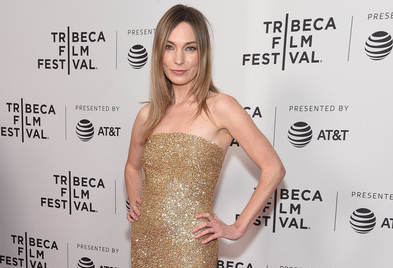
One of the great things also about LOST TRANSMISSIONS is the music. In addition to film, music also brings people together; the idea of music. That’s a core of this particular film.
Yeah. We also have our soundtrack out and available and put out by Lakeshore Records. That’s been something that’s been nice to share. I’ve been making playlists for people. It’s atmospheric, and it’s beautiful, and it’s sort of haunting. I think for just having some chill music going on at home while you work. It’ss perfect for it.
You couldn’t ask for a much better soundtrack. You’ve got Marius DeVries involved with the music here. You’ve got Hugo Nicolson as your composer for original pieces. It’s a win-win situation.
We had some really great talent coming together for this, and largely because the story that it’s inspired by was very much in the music scene. So we had a lot of support from a lot of friends.

How did this story come to you? Was it always your intent to direct it?
It was an experience I went through in 2012 with my friend. We were able to get him to safety. We got him back to the UK, where he has health care over there, so he could get psychiatric help there, whereas he couldn’t over here. Once he got stabilized, it’s something I approached him about because I realized going through that experience that it was so trying, but we learned so much about it. I learned so much about the broken mental health care system. There are particular ways that this story had a happy ending. It was something that was very universal and I thought it would be worth making a film about. I approached him about it, and he agreed that it would be very empowering to share his story. He’s in this unique position to be able to reflect on his experiences. He consulted in the process of writing the script. Then we shot in 2018.
You’ve got an amazing cast and an amazing crew. I’ve got to ask you about the marriage between Tom Castronovo’s production design and Arnau’s [Valls Colomer] beautiful cinematography.
Oh, thank you! They’re both incredible. What I loved about Arnau’s cinematography was, in a lot of his music videos, he has this ability to have this deep focus and a twinge of surrealism, which was the aesthetic I was looking for with this film. I feel much inspired by Garry Winogrand, who was a 1950s street photographer who did a lot of shooting down on Skid Row here in Los Angeles. It’s an unusual aesthetic these days to shoot. They committed to such deep focus when it’s not a documentary. This film did have documentary inspiration. But it creates this naturalistic feeling, and also in some places, a slight twinge of surrealism. I really want it to feel that people connected to each other and things in the frame because Theo’s very much talking about this unseen world around us. I was really interested in compositions that keyed into that. Tom was great. He had an incredible team that he brought with him. They were a delight on set. He very much saw the vision of the film and knew these weird little things I was going for, and really ran with it. And since we were a small film, he was able to really take advantage of the locations that we are shooting in. For instance, we were shooting in real musicians’ music studios here in Los Angeles and took advantage of the built-in production design in some of those instances. It was very important to me. There’s moments where there are inanimate objects and things that gain more attention because of what I mentioned before about what Theo sees in the world around him, like the lamp in Hannah’s bedroom that slowly creeps down. Also, like the various planes of glass that constantly are separating Theo from her. People are constantly either looking through these plexiglass windows at the hospital, or they’re inside the recording booth. It’s sort of like they are right there, but they’re slightly on a different plane. For me, it was a metaphor for mental illness.
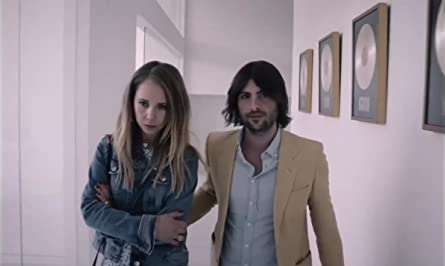
Arnau’s lighting design for the entire film is outstanding. It really plays well with that idea of windows, mirrors, glass. It adds another whole level to the visual total bandwidth that we get.
He was really great in embracing this idea. I didn’t really want this film to look as gleaming and sharp as most things are looking these days by virtue of being shot in a super high def. It’s a film that’s about gritty subject matter, talking about it winds up in the street by the end of the film. That is what this is about. We shot on the Alexa Mini. We shot in Super 16 mode on the Alexa Mini. Then after that, we used live grain in post to further give it that filmic feel. What I love about Arnau is that he had this sensibility where we’re shooting naturalistically, but he also would accent things with pastel neon backlighting that was a reflection of a very feminine quality that the film had, being Hannah’s story, and her perspective on the world.
It’s beautifully done. A key integral part in the construct of LOST TRANSMISSIONS, and it’s right there in the title, “transmissions”, is your sound design. How did you go about planning and working with your sound, with your designer Brent Kiser and your mixer Eric Bautista, and putting this together from a sonic viewpoint? Sound plays definitively into this story.
Absolutely. It’s all rooted in the character and Theo’s experience. He is a music producer. That is the world and his medium that he works in. But, by nature, schizophrenia is a condition where you’re absorbing excess stimulation from your environment because your brain is overloaded. The neural pathways are too far apart so all the signals are getting jumbled and mixed together and you’re making connections between them, like between a certain buzzing light and a sound and what that means about the fate of the world or something. When creating the sound design, and it becomes more accentuated towards the end of the film as Hannah starts to empathize with him more and starts to step into his world more and then trying to pull him back, we did a lot of taking ambient sounds and really cranking them up; sounds of when Hannah’s in the car, and he’s starting to break and she hasn’t figured it out yet, we do little things like crank up the sound of the ice cream truck and kids yelling. I think you might not notice it at first, but it just kind of puts things on edge, and then that increases towards the end of the film. There was a lot of back and forth between our composer, Hugo [Nicolson], and our sound designer, Brent Kiser, because we took a lot of the sound design and we would incorporate it into the score because that’s also reflective of what Theo’s music would be like, but it was this back and forth between naturally occurring sounds and the music that would evolve from that.

It’s beautifully integrated. The sound is its own character here. It plays so well.
That’s great. That’s good to hear that it plays well on a home theatre. You lose control when people are watching it on their screens at home rather than being in a theater. So that’s good to hear.
Yes. I found that very, very striking. I’m always sensitive to sound and sound design in films as it is. I’m always excited when I find a film where it is that integral to the story as a whole and hear it as identifiable with a specific character that draws in other characters and elements and the audience. I just found it extremely wonderfully done with LOST TRANSMISSIONS.
Thank you. To me, that’s how Hannah and Theo really communicated in the sound space of the film. As two people, they’re people who sort of jive creatively in the type of music they make, so we might not be able to see into the delusions that Theo is experiencing, but we do get a sense of what he’s going through. Again, as I said, as Hannah starts to imagine it more, and she herself gets a little unsettled by it, it starts to happen through the sound design.
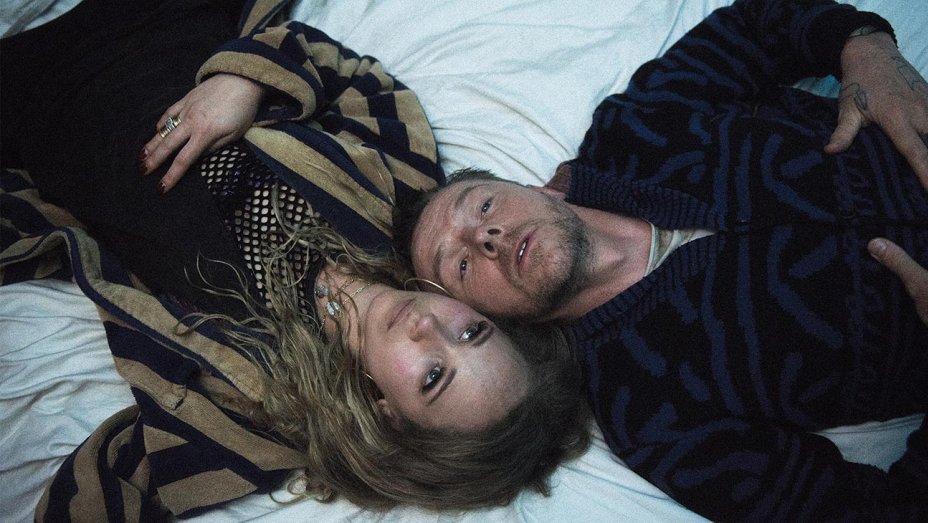
It makes it a very sensory experience, Katherine. It becomes very real and very tangible thanks to the sound.
That’s good to hear. I think sound can be very affecting. It is emotion. Music is emotion. That’s why so much of this journey was about Hannah reconnecting with her own emotions that she had pushed away far from herself. A lot of the music is meant to be Hannah’s reconnection with herself.
Speaking of Hannah and Theo, you knocked it out of the park casting Juno [Temple] and Simon [Pegg]. For Simon, this is an award-worthy performance. It is hands down the best of his career.
He really crushed it, didn’t he? ‘m so proud of him. He occurred to me early on as the person for this film, largely because I was well aware of how well he plays the humor in dramatic films, even the films he did with Edgar Wright, but even in the bigger films, Mission Impossible and stuff, he really knows, he understands humor. He knows when it’s appropriate to play arch and when it’s appropriate to play it more believable. That was so necessary for whichever actor was going to play Theo; otherwise, if you’re playing it arch, it would be really inappropriate for the subject matter. So it was just absolutely essential, and Simon understood that perfectly.
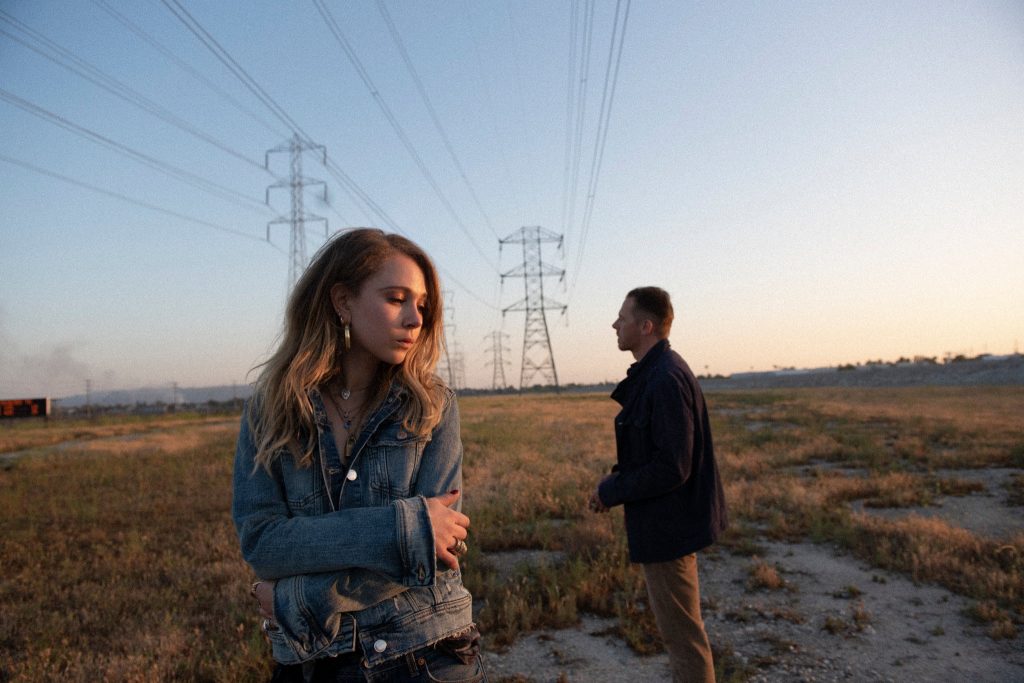
Then you pair him up with Juno. There is nothing that she can’t play. She is chameleonic in what she can do physically and emotionally.
She’s a true character actor. I think that she’s played so many different roles that it didn’t occur to the caster until closer to shooting. We had someone who suggested her and knew her to be such a deeply empathetic individual that would embody that important trait of Hannah’s. B ut yeah, she really can transform.
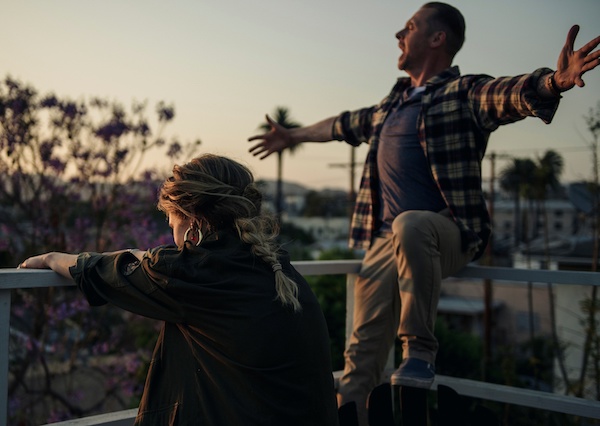
It’s a big leap going from a short film into a feature film so I’m curious about the learning curve, and what you learned about yourself as a director, as a feature film director, that you can now take forward into your future projects.
I tend to be a very prepared person. Arnau said I was the most prepared director he had ever worked with and that I knew what I wanted. I found that I did cover things a lot, as it was my first feature, so that I knew that I had all the tools in my toolbox when I got to the edit. But I learned that the things that were a little bit more unusual, like the back and forth panning shot between Hannah and Theo in the hospital, worked. I think I’ll feel more confident to take these risks with the stranger shot design because I find that it does really pay off. There’s a certain degree of freedom that I think that if you allow yourself to have, it yields really good results on set. Sort of close to the ideas in the film as well.
As interesting as it has been to have a film that’s coming out in this special moment in history, I feel that it seems so small in comparison. We’ve got bigger things going on, and bigger things to think about. I think about the health and safety of everybody’s loved ones, and our larger community, and our nation really. I’m concerned. I’m concerned that a great number of people are at risk of dying. It’s very sobering. I’m also very concerned about the Skid Row community that we shot with and that we became very close with because they’re some of the most at risk. This thing would just sweep through there. So I really urge people to stay home, and take it seriously, and watch movies.
by debbie elias, exclusive interview 03/17/2020











